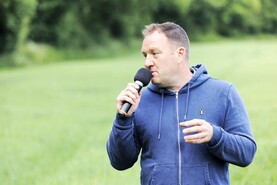Tillage Day 2024 saw hundreds of farmers and trade fill a room with positivity.
The past two seasons have been difficult. Wet weather prevented harvesting and sowing at ideal times.
Costs and prices have been up and down, but the past few months have brought a good spring crop harvest for many, dry weather for harvesting and sowing, which has taken some of the pressure off.
Farmers were in a good mood and while there are challenges in the sector, the atmosphere in the room suggested a bright outlook and a renewed enthusiasm among the crowd to push for positive change in the sector.
Our farmer panel saw three excellent operators - Tony Bell, Tom Murray and Patrick Kehoe - share an honest experience from the season gone by.
Costs and nutrition
Calculating costs and returns was emphasised as a must-do in this session and its importance ran through to the discussion on grain trading, where knowing your costs is a must to settle on a price to sell at.
Nutrition was a big talking point with agronomists and while plants need their micro nutrients, it is essential that the basics are looked after first. A soil test and correct phosphorus, potassium and lime are priorities.
Looking at policy and the pressure from the dairy sector for land was clear. The changes to nitrates regulations had unintended consequences for tillage farmers and it continues to hit farms hard.
Calendar farming
Calendar farming was front and centre and an audience poll showed that the majority of farmers are under pressure to meet stubble cultivation requirements within the 14-day timeframe.
It was clear the three-crop rule needs to be reviewed and made more flexible for smaller farmers in particular.
Looking to the future, there needs to be more added-value grain. Work on carbon assessment of Irish grain by Teagasc needs to be added to AgNav, which calculates the carbon footprint of livestock farms, as soon as possible to place a value on Irish grain.
There looks to be a lack of interest from the dairy and beef industry to use Irish grain to add value to their products and make them more sustainable, but the example of Tipperary Fresh Milk selling in 82 supermarket stores across the country shows there is an appetite for a value-added product and consumers will buy it.






 This is a subscriber-only article
This is a subscriber-only article










SHARING OPTIONS: